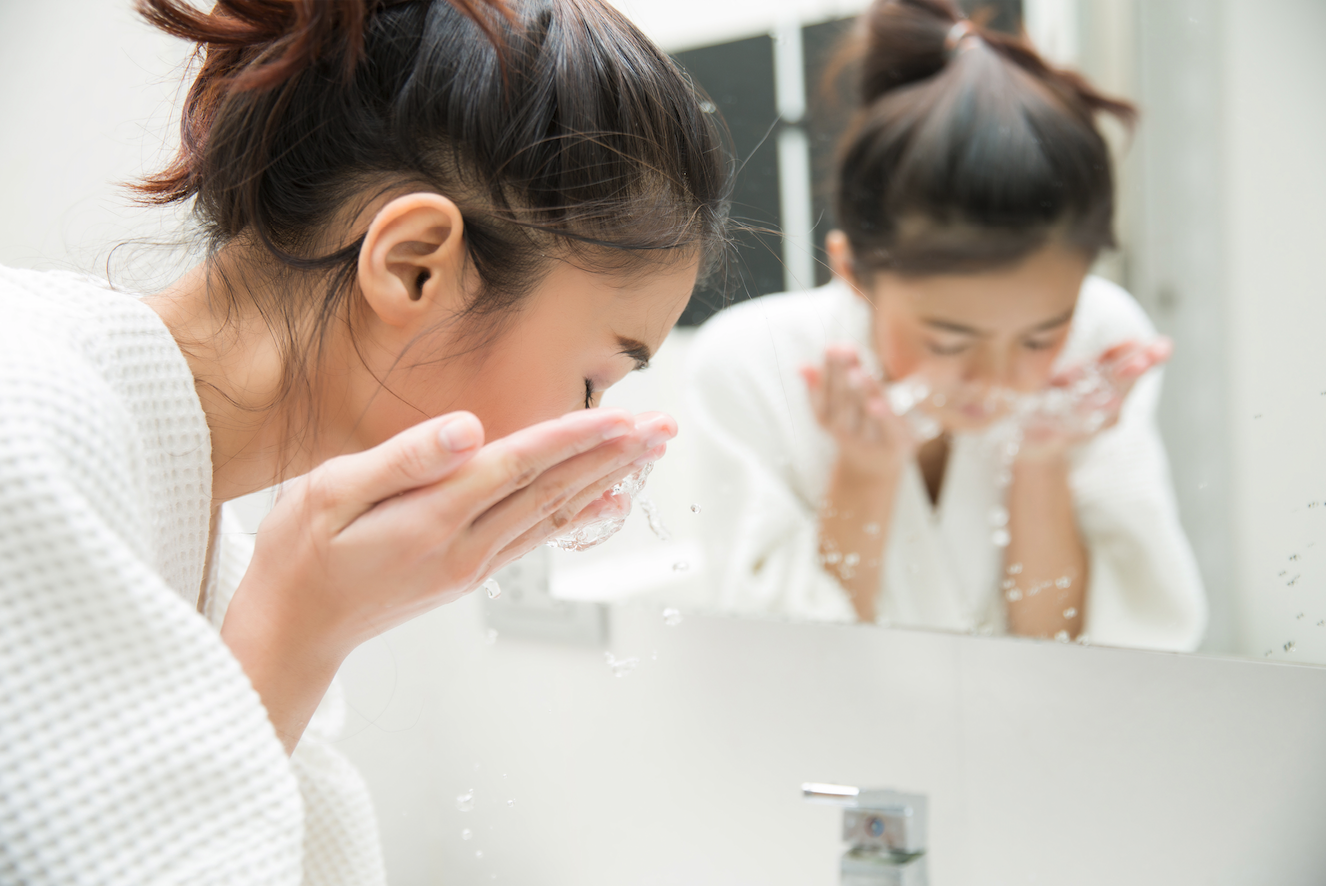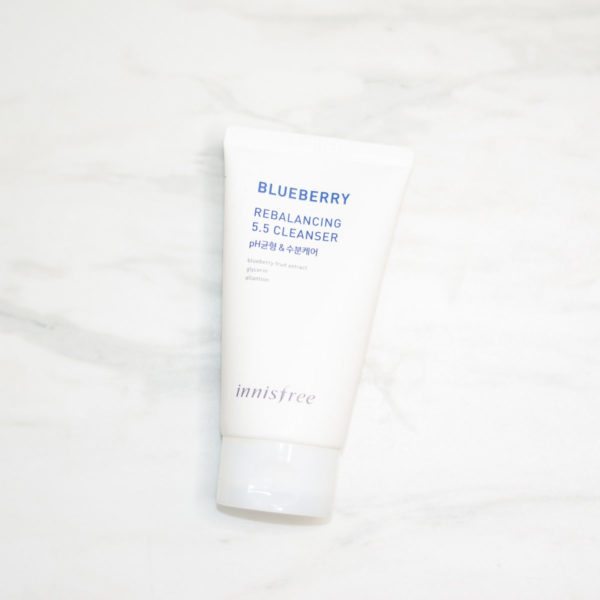The Beginner’s Guide to Cleanser pH: Why It Matters to Your Skin
Jude Chao
May 30, 2017
The culprit to a number of your skin problems could be hiding right in plain sight (in other words, your bathroom sink).
Attention! If you’re perfectly happy with your skin on all levels and totally confident in your cleanser choice (whatever its pH may be), then this article is not for you. As much as I like to experiment with skincare, there really is truth in the saying that you shouldn’t fix what isn’t broken. But if you’re at all unhappy with any aspect of your skin and feel like you’ve tried so many things without finding the solution, read on.
First, think hard about your skin. Despite what you do, do you still have struggles with any of the following:
* Sensitivity or frequent irritation
* Recurring breakouts that don’t respond consistently to treatment
* Frequently dry, dehydrated-feeling skin
* Excessive or unusual oiliness
* General lack of radiance, plumpness, bounce, and glow
Now think about your skincare routine. You’ve likely researched just about every treatment product in it, but have you given much thought to your cleanser? Maybe not. Cleanser is such a basic thing that it’s easy to overlook the critical role it plays in skin health and appearance. But the simple ability to clean skin isn’t all a cleanser needs to offer. For optimal results, your face wash needs to clean your skin without doing damage to it, and that’s something that hardly any basic cleanser can achieve — “basic” as in high pH!
(At the bottom of this article, I’ll be linking to a couple more intensively detailed discussions on the topic, but for our purposes here, let’s boil it down to the basics. Har har har.)
But first, the skin
The outer layers of our skin are composed of dead skin cells and essential fatty acids, arranged in a kind of brick and mortar structure, with the skin cells as the bricks and the fatty acids and lipids as the mortar. Think of this as the lipid barrier or moisture barrier. The outermost layers of this structure form a mildly acidic film known as the acid mantle. As you might have guessed, the acid mantle in its natural, healthy state is at an acidic pH — somewhere between 4 and 6 generally.
The acid mantle and the layers beneath it serve a vital role in preserving the health and beauty of your skin in several ways. First of all, the acidity of the acid mantle creates an inhospitable environment for bacteria to survive and breed — bacteria including those commonly responsible for breakouts. It keeps the bad stuff out of your face, reducing the occurrence of bacterial acne.
Second, the acid mantle and the lipid barrier also serve to keep good stuff in your skin. By “good stuff,” I mostly mean water — the water responsible for keeping skin feeling comfortable and looking plump and supple. That water is also responsible for the dewy glow that K-beauty is famous for promoting. The interaction of light with the water in skin produces an unmistakable inner glow that no highlighter or illuminator can really reproduce.
How pH affects the skin
So what happens when you use a “basic,” high-pH cleanser?

For many people, the alkaline pH of a “basic” cleanser will severely disrupt the acid mantle and the lipid barrier. A cleanser at too high of a pH weakens those skin structures, allowing the cleansing agents in the product to strip away too many of the skin’s natural lipids, compromising its overall integrity and allowing bacteria and irritants to invade and water to escape. As a side consequence, skin often appears oilier than normal. My personal theory is that the breakdown of the lipid barrier’s healthy structure allows too many of skin’s fatty acids to leak out to the surface.
It’s important to note that this damage doesn’t happen all at once, but cumulatively. From my own personal experience, I’ve tested several high-pH cleansers since starting my blog. In every instance, I thought (and usually hoped) that the cleanser I was using would be fine for my skin. I’d love to disprove the idea that we need low-pH cleansers for optimal skin health and appearance! But over long periods of use — in some cases, mere days; in others, weeks — I’d find my skin getting more and more sensitive, feeling drier and tighter after cleansing, and in the worst case actually getting red and irritated by cleansing itself.
In contrast, I’ve been using my favorite neutral-to-low-pH cleansers for months or years without similar adverse effects.
Does any of this make sense when you consider your own skin issues and all the solutions you’ve tried? If so, I strongly suggest grabbing some pH testing strips and checking out the pH of your cleanser. While blogger recommendations may vary, I personally find that cleansers of pH 6.5 and under are generally fine for my skin, while I start moving into trouble territory very quickly at 8 and above. And if your cleanser turns out to be a high pH? Time to grab a low pH cleanser and see if it might make a difference.
Low pH cleansers I’ve tried and approve
Sulwhasoo Snowise EX Cleansing Foam, my ultimate HG. This cleanser products a thick, lavish foam with a refreshing forest scent and gets my skin clean and soft every time, with no drying or irritation.
 Missha Super Aqua Oxygen Micro Visible Deep Cleanser is a fun cleanser that comes out of the pump as a gel. Spread the gel over a dry face and watch it transform to a tickly, fine foam that clears pores and leaves skin bright and clean.
Missha Super Aqua Oxygen Micro Visible Deep Cleanser is a fun cleanser that comes out of the pump as a gel. Spread the gel over a dry face and watch it transform to a tickly, fine foam that clears pores and leaves skin bright and clean.
Innisfree Blueberry Rebalancing 5.5 Cleanser is a gentle and lightly moisturizing foaming cleanser that gets the job done with a minimum of fuss and a minimal hit to the skincare budget.
Extra reading
There’s been an understanding in scientific circles of the effects of cleanser pH on skin health for quite some time, but the bloggers who brought the issue to the forefront of Western K-beauty were Kerry from Skin and Tonics and Cat of Snow White and the Asian Pear. Both have written extensively researched and informative posts on the topic. Check them out:
Skin and Tonics: The Importance of Fatty Acids, pH, & the Moisture Barrier
Snow White and the Asian Pear: Skincare Discovery: Why the pH of Your Cleanser Matters
As a final note, it is true that many people do not find the pH levels of their basic cleansers to be problematic, and some feel that placing importance on cleanser pH can be dogmatic. There are plenty of “I/my cousin/my friend’s kindergarten teacher with the great skin wash their face with bar soap every day and are fine” stories floating around. But there are also plenty of compelling stories like Kerry’s around, of skin conditions utterly transformed by attention to the single detail of pH in cleanser.
Like I said, if you’re absolutely happy with every aspect of your skin and totally confident that your cleansing step is right for you, then just ignore me. But if you, like many of us, have dealt with skin issues that seem to have no clear cause and no clear solution, consider the pH of your cleanser. You might be surprised at what you discover.
Loading...

